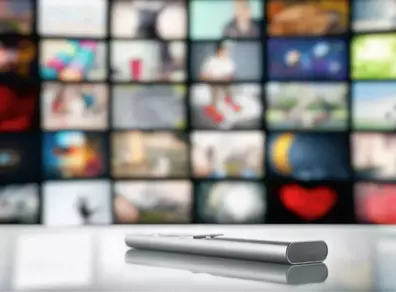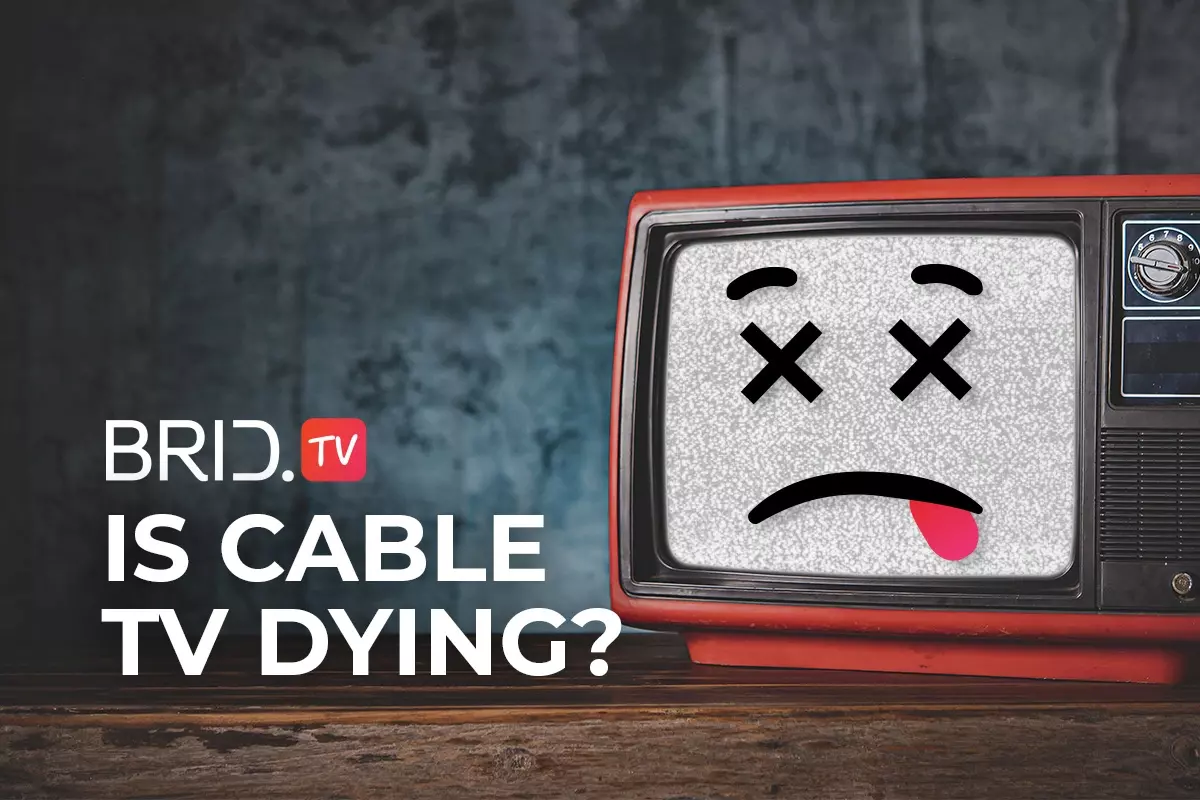The popularity of cable TV has been going down by the year. And in 2023, you can’t help but wonder, is cable TV dying? What is making traditional TV lose its original popularity? And is the rapid rise of online streaming services to blame?
Is Cable TV Dying — What Do the Statistics Say?
According to Statista, the number of households in the U.S. that pay for cable television services has been steadily decreasing for about a decade. However, while there is an obvious downward trend, cable television isn’t dead just yet.
For starters, there is a significant portion of the older population that finds it difficult to adapt to new digital trends. So it’s not surprising that baby boomers are the most faithful cable TV subscribers of all age groups.
Another thing keeping cable TV alive is live event broadcasting. Although there are plenty of online solutions for live streaming events, most people still seem to prefer traditional linear TV for such occasions. For instance, according to NFL, almost 90% of viewers watched the 2022 Super Bowl on TV.
All that being said, there is no doubt that cable television is losing its appeal. The number of U.S. households that subscribe to cable TV went from around 47% in 2019 to 42% in 2022. All things considered, this trend is not stopping anytime soon. Insider Intelligence predicts that, in 2026, households that don’t subscribe to any pay-TV service will exceed the number of households that do by around 26 million.
5 Main Reasons Why Cable TV Is Dying
The answer to cable TV’s demise lies in several different detriments, each one of them doing its part. So let’s take a look at some of the biggest factors that triggered the downfall of pay-TV services.
The Rise of On-Demand Content
The rise in the popularity of VOD has been the catalyst for the change in consumer preferences. On-demand technology has allowed viewers to enjoy their favorite content whenever they want to. In other words, they don’t have to plan their days around the TV schedule.
What’s more, it has allowed us to move away from linear TV advertising and enjoy videos with less or no interruption by commercial ads. This is not to say that video ads are not present in the online content, but they are often skippable and much shorter than a typical TV commercial break. What’s more, with advanced targeting options, specifically behavioral and contextual targeting, video ads served to viewers are more relevant and less annoying.
Increasing Competition from Streaming Services
On-demand streaming services don’t exactly take up a small portion of the market. For the past decade, Netflix has been expanding its global digital reach, going from 35 million subscribers in 2013 to almost reaching 240 million in 2023. This has inspired many other broadcasters and publishers to launch their own OTT streaming services. Today, Disney+, Hulu, and HBO Max are a staple in many households. They have all been competing fiercely among themselves, leaving little room for cable TV to remain relevant at all.

There Are More Affordable Alternatives
Another advantage that OTT has over traditional television is the price. Depending on the provider, cable TV services can cost anywhere from tens to hundreds of dollars. By contrast, subscribing to SVOD streaming services often costs as little as a couple of bucks.
Business Insider’s correspondent Graham Flannagan recounts his experience switching from cable TV to online services:

“The whole point of this is to save money. We were paying $210 a month. Now, with the combination of Spectrum’s internet service and DirecTV Now, we’re going to pay $120 a month. That’s going to save us over $1,000 a year.”
However, even subscription-based on-demand video has recently seen a decline in popularity. The consensus is that today’s viewers would rather watch a short video ad than pay for content access (SVOD, TVOD, and cable TV). Here is where the rise of AVOD streaming platforms comes in. With ad-supported streaming services, like, for example, Tubi and Freevee, audiences can access content free of charge in exchange for viewing the occasionally served video ads.
Streaming Services More Accessible and Convenient
We have already established that VOD streaming services allow us to watch content whenever we want. But that isn’t the only perk they have in terms of accessibility and convenience. OTT apps have made it possible for users to access content from an array of devices, including OTT boxes, CTV, gaming consoles, mobile phones, and so on. By contrast, with cable, users are tied to their television sets.
Consumer Behavior is Changing
Of course, streaming services wouldn’t be this successful if consumers didn’t respond to them well. We’re leading increasingly fast-paced lifestyles, and OTT broadcasting simply matches our habits better. Many viewers don’t have the time to sit in front of the TV during their workday. Rather, they consume content on the go, and that’s much easier to do with an OTT device (like your phone) in your pocket.
So Cable TV Is Dying — What’s Next?
The inevitable death of cable TV doesn’t mean your business has to go down with it. There are certain things broadcasters can do to avoid their downfall. For example, unbundling of content, i.e., allowing users to only pay for the channels they watch, could be a step in the right direction.
However, with fewer people willing to pay for cable, advertisers no longer purchasing TV ad real estate, and pouring their money into OTT advertising, there is simply little to no profitability in starting a cable TV service.
The best course of action for any broadcaster is to start providing an online linear TV solution and adjust their monetization model. For instance, FAST is one of the most optimal solutions for broadcasters who want to switch to online streaming.
Cable TV Alternatives for Fans of Traditional TV
As mentioned above, FAST is a great alternative to cable TV. The content is delivered for free in the form of linear scheduled programming, rather than on-demand, with ads served before, during, or after videos. This way, FAST is much more similar to traditional cable television and might not be a drastic change for older viewers and those who prefer cable.
Another solution would be switching entirely to online streaming. Partnering with a reliable OTT platform and launching your own streaming service. You will be able to reach a wider audience, and with OTT monetization encompassing much more than just selling ad inventory, you will have many options for monetizing video content and boosting your revenue.
Get Started With OTT and CTV With TargetVideo
TargetVideo’s OTT solution is perfect for broadcasters looking to launch their online streaming service. Deliver high-quality streams across CTV and mobile devices, use advanced advertising and yield optimization features to scale your business, and receive Premium Demand from some of the largest demand partners in the industry. Manage your content, track your performance, and gain as much profit as possible with our powerful Video Revenue & Engagement Platform. Launch your OTT service with TargetVideo.

FAQ
1. What is cable TV?
Cable TV is a method of delivering video content to consumers using coaxial and fiber-optic cables. The term is also sometimes used to encompass satellite television, although the two methods are quite different.
2. When did cable TV come out?
Cable TV first came out in 1948 in the United States. Its original purpose was to make the television signal better in more remote areas.
3. What’s the future of cable TV?
The future of cable TV is uncertain, as more people are cutting the cord and turning to online services, such as OTT streaming.
4. Is building a cable TV service worth it?
Building a cable TV service is not worth it. If you want to distribute and monetize video content, building an OTT streaming service is a much better option.
5. Is cable TV dying in 2023?
Cable TV is slowly dying out as OTT services steadily surpass it in viewership numbers.
